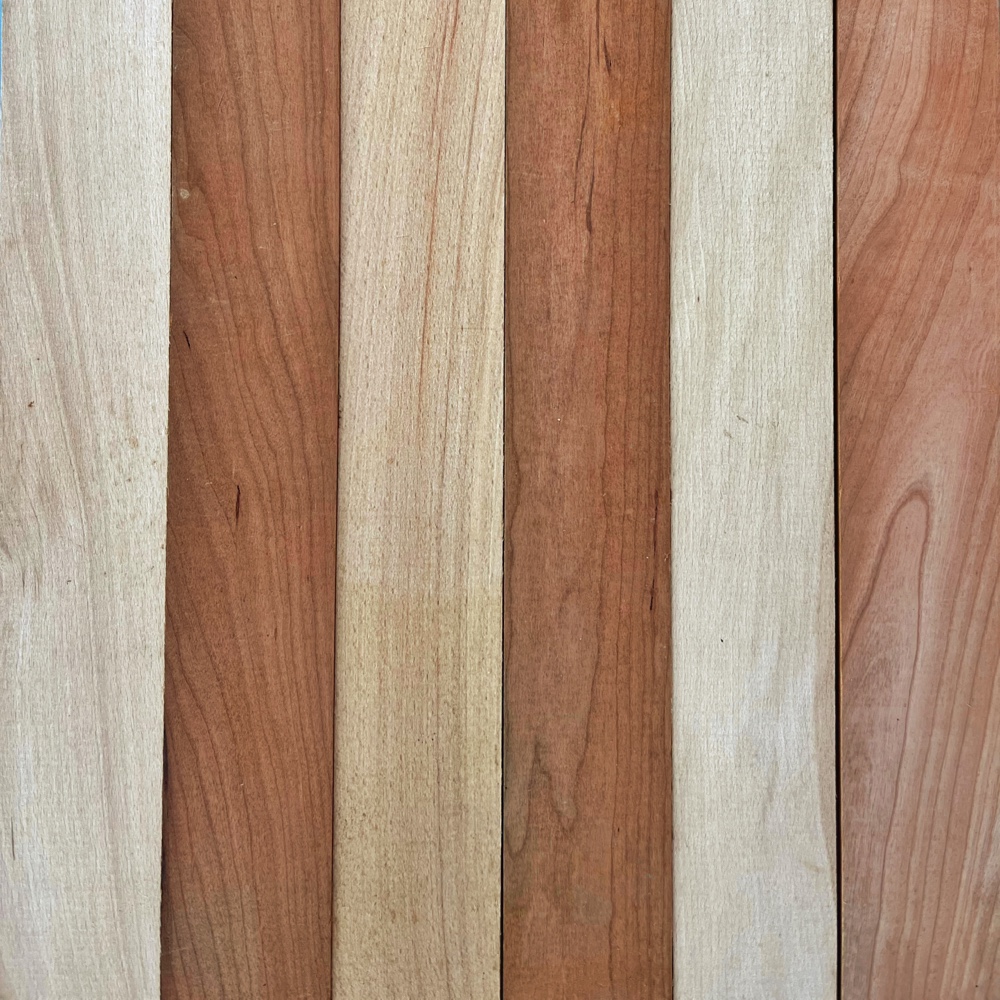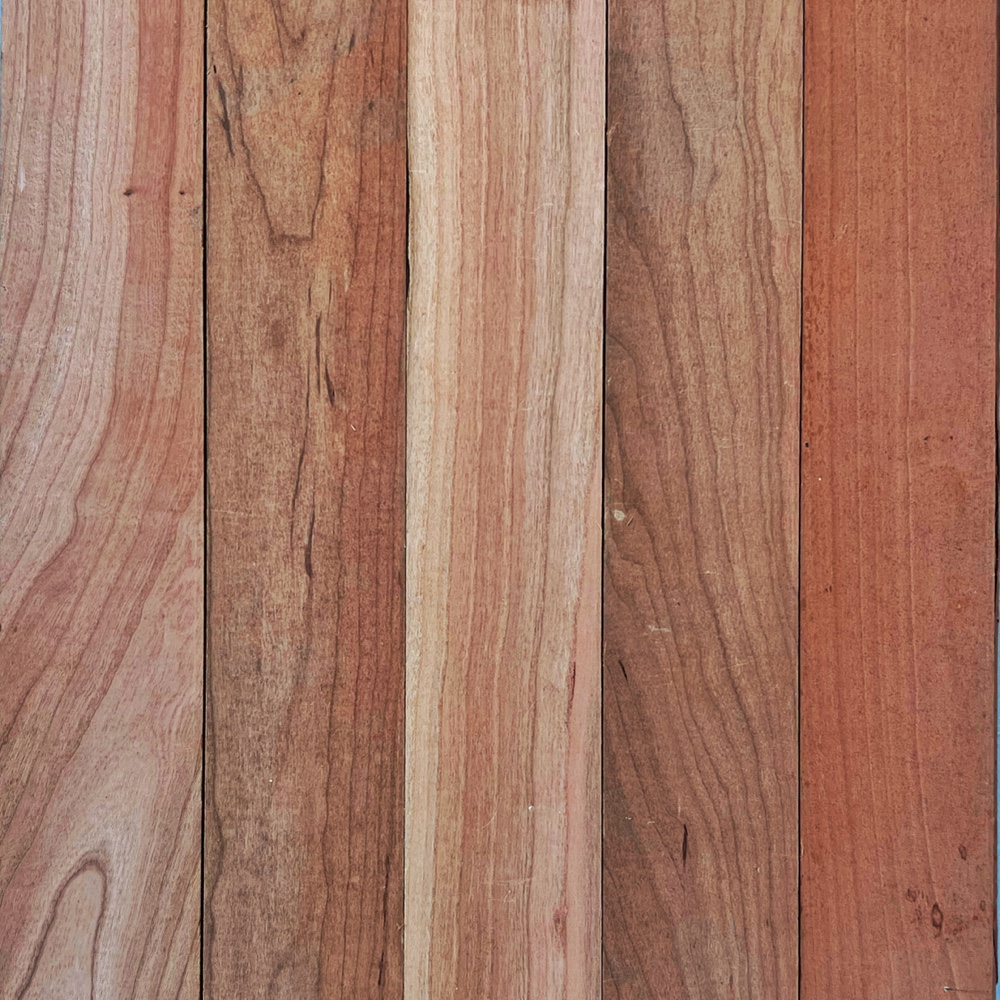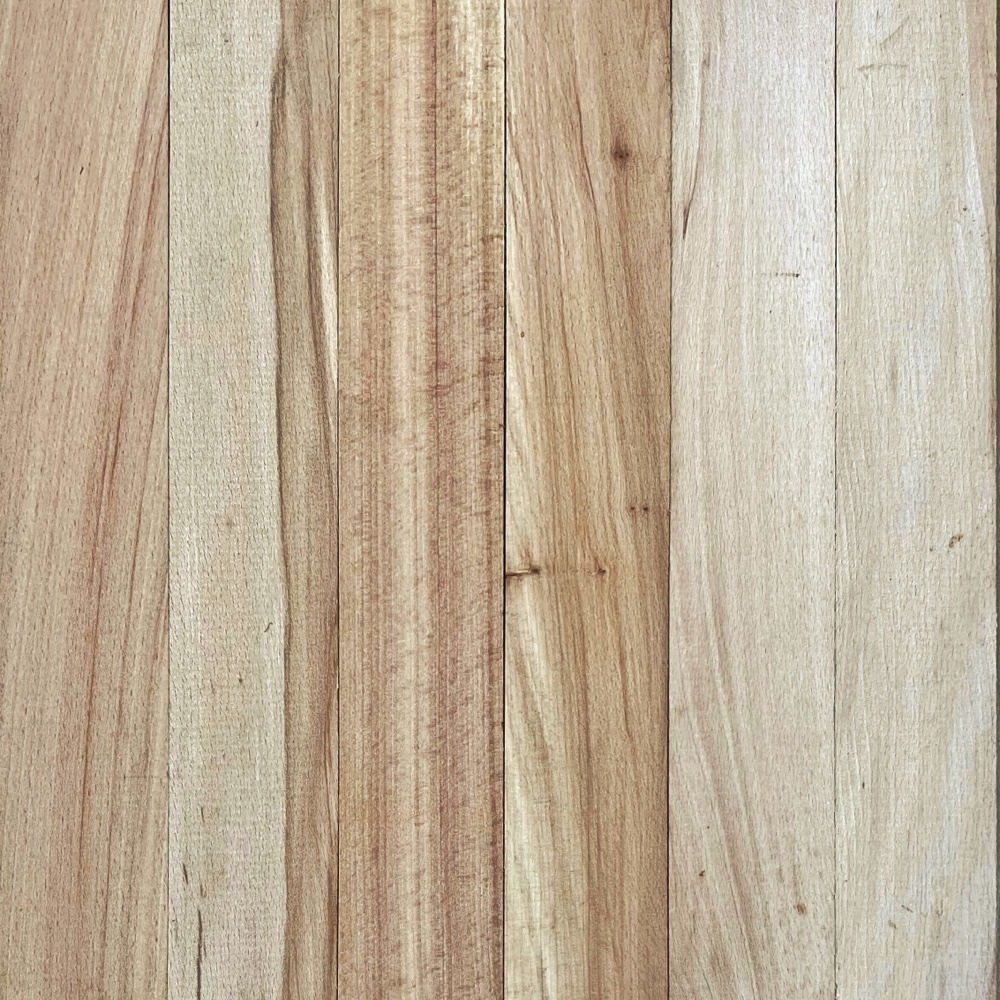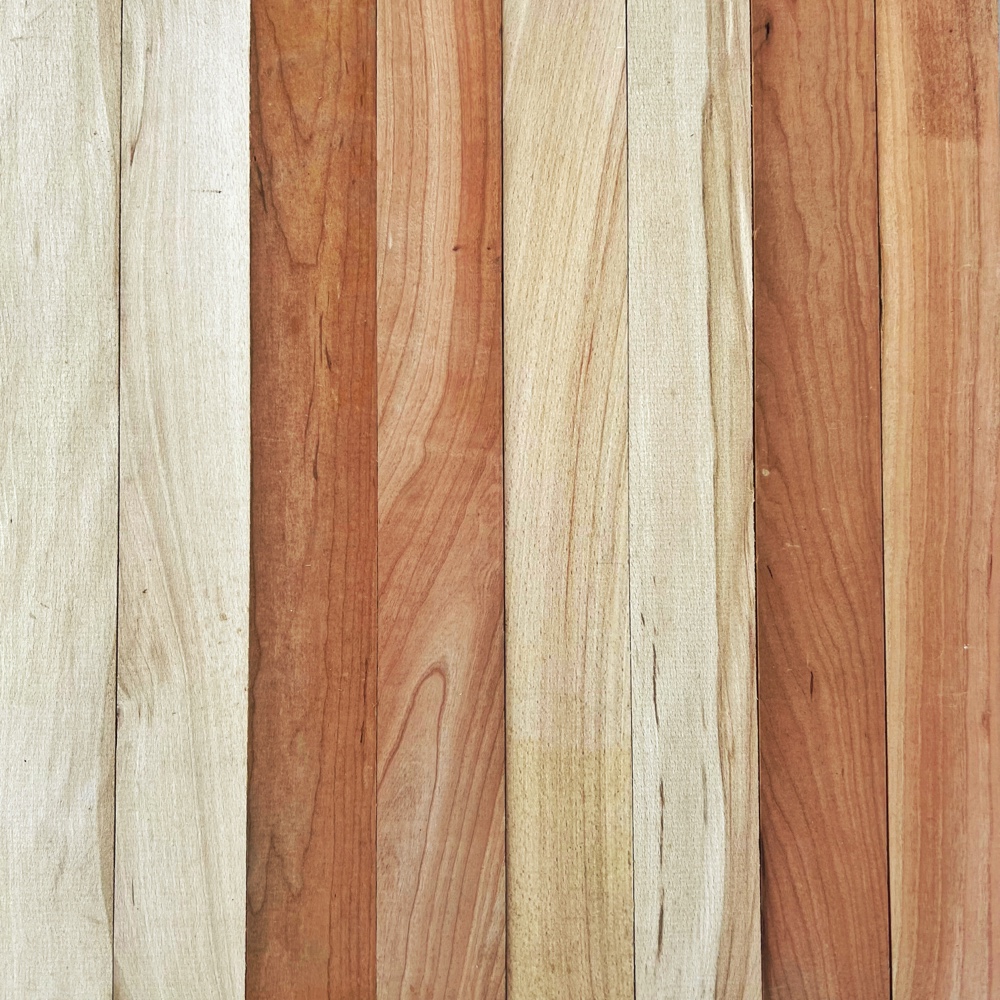
Repurposing Rosslyn’s icehouse is an ambitious project within a diminutive space. On the one hand, it’s an historic rehabilitation of an obsolescent utility building into a home office/studio with lifestyle perks like a hot tub and firepit. It’s also an experiment in adaptive reuse: reinventing this no-longer functionally relevant building with materials cherry picked from 17+ years of architectural salvage, surplus building materials from several renovations, and a a carriage barn full of lumber harvested, milled, and cured on site from a decade and a half of restoration work in Rosslyn’s fields and forests. There are even a couple of personal objectives woven into the present project, but I’ll hem them in for now do that I can reflect on the mixed species flooring photographed above and below.
You’re looking at two different hardwood species in these flooring samples: beech (this batch has been selected for its “character”, patterned grain) and jatoba (a.k.a. Brazilian cherry). Both of these are surplus remaining from our 2006-9 rehab of the house, and either/both of them *might* find their way into the icehouse. I’ll explain more in due course, but today I’d like to narrow our focus to our preliminary “research”, experimentation with enough whimsy and creative license that it almost feels like playing around.
I’m referring to a sort of exploratory brainstorming, decidedly unscientific experimentation but curiosity-fueled artistic experimentation. The question we’ve begun to explore is what might be possible if we combined dissimilar wood species in the same floor? Could the beechwood and the jatoba hardwood flooring merge into an appealing design element? Would this experiment in combinatorial creativity contribute meaningfully to a unique, cohesive design?
Wondering and wandering into this experiment was made possible by Pam and Tony who pulled stock from storage, arranged patterns playfully, and sent me the photographs to ponder. And while there’s still plenty of experimentation ahead in this little mixed species flooring experiment, the creative cogs have begun to spin…

Why Experiment with Mixed Species Flooring?
Sometimes the singing underneath surfaces in a timely manner. Good fortune allows the insights of Kathleen Kralowec to help answer this question. All of the following excerpts are drawn from her article, a wise wander that opens as if I’d written it myself.
This article, I warn you, is itself an experiment: a conscious act of wandering.
Kathleen Kralowec, “Why Artists Must Experiment” (Source: Medium)
Let’s wander a bit with Kralowec.
Recognizing an act as an experiment releases it from a lot of… demands of perfection. The outcome of experimentation is knowledge, and failure is just as valuable as success, because one has expanded one’s awareness of one’s own abilities, one’s deeper ideas, the potential of a media, a process, a genre, an art-form.
And so we play with beech and jatoba, experimenting and exploring, yielding to our curiosity, risking failure, but also possibly failing our way toward success.

Artists must experiment in order to find their way… because there is no other road-map, no other way to discover how best to navigate…
As creatives we must grow comfortable with the prospect of forging our own way, navigating by trial-and-error. Kralowec goes on to propose the notion of a creative/artistic studio as a laboratory. Experimentation — and this encompasses failures as well as success — is fundamental to the creative process. And so Pam and Tony and I plunge headfirst into our laboratory, experimenting, mapping the unknown.
Practice, or rehearsal, is meant to increase precision on an existing pattern of action. Experimentation takes us outside those repetitions, to unexplored territory, untried actions… Experiment is an open door, an invitation to do things that might not work, and its necessary for what we may as well call innovation in the arts.
Jettisoning the familiar patterns, the customary solutions, and the “right way” is liberating, and sometimes a little unnerving. Welcome to the wilderness!
Experimentation allows one to explore the wilderness of one’s own talent and the wilderness of one’s own mind… Sometimes one must let go, enter into the experimental space, give oneself that permission to stumble, in order to advance to the next stage.

And stumble, we will. Stumble, I do. Often. But every once in a while, wandering in this metaphorical wilderness of experimentation, we discover something singular, something remarkable.
Extending Kralowec’s notion of art studio as experimental laboratory to our creative practice(s) in general, then it’s incumbent upon us to untether from the familiar, the tried and true, the already discovered, in order to wonder and wander uninhibited, in order to explore and experiment without prejudice and confining assumptions. Not always, of course. And we must be willing to fail. Often. It is this vulnerability combined with curiosity, and with the courage to challenge our constraints and catalyze that curiosity through experimentation into the possibility of discovery.
At this stage we’re still early in our experimentation. Discovery is still eluding us. But our curiosity and our carefree experimentation are raring to go!
Now that we’ve experimented with the beech and jatoba flooring in their raw, unaltered state I have a couple of follow-on experiments I’m hoping to run. Stay tuned!
What do you think?